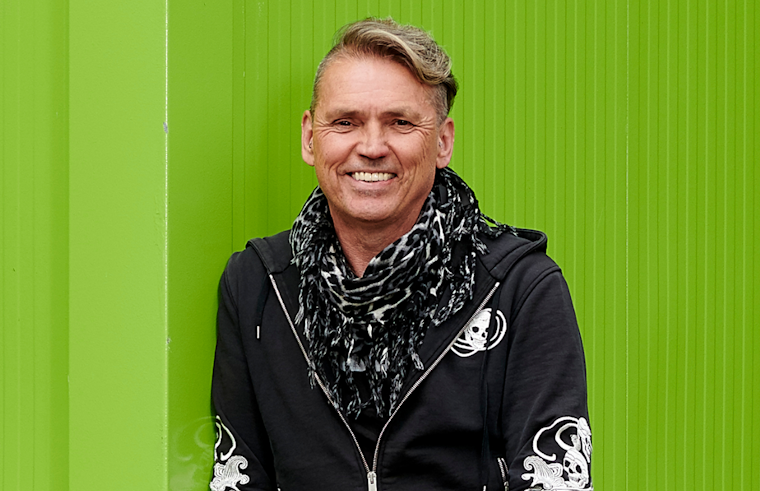
I didn’t set out to be a businessman, a campaigner, or a so-called disruptor - I just wanted to live a low-impact life. But somewhere along the way, I realised I could do more than just tread lightly - I could try to change the system.
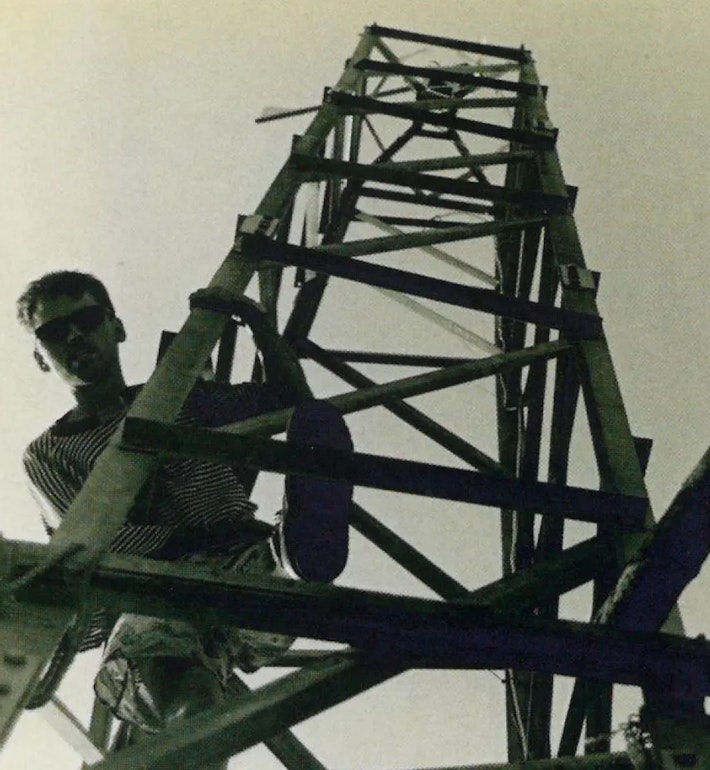
Life on the Road and a Windmill at Glastonbury
I left school at 15 with no qualifications and spent the next decade living off-grid, travelling the country in a series of unusual vehicles. In the late eighties, I started going to Glastonbury, where I found work towing broken-down cars and fixing engines. It was there that I came up with Windphones - a simple idea: selling phone calls to festival-goers.
Mobiles weren’t common back then, but they seemed perfect for the job. The only issue? Keeping them charged. That’s when I decided to use a windmill - cobbling together a setup using an old electricity pylon, a 1kW turbine from the US, and some scrapyard train batteries I’d found in Stroud. It worked. For years, Windphones was a Glastonbury staple, capturing people’s imagination.
It was a small thing, but it got me thinking bigger.
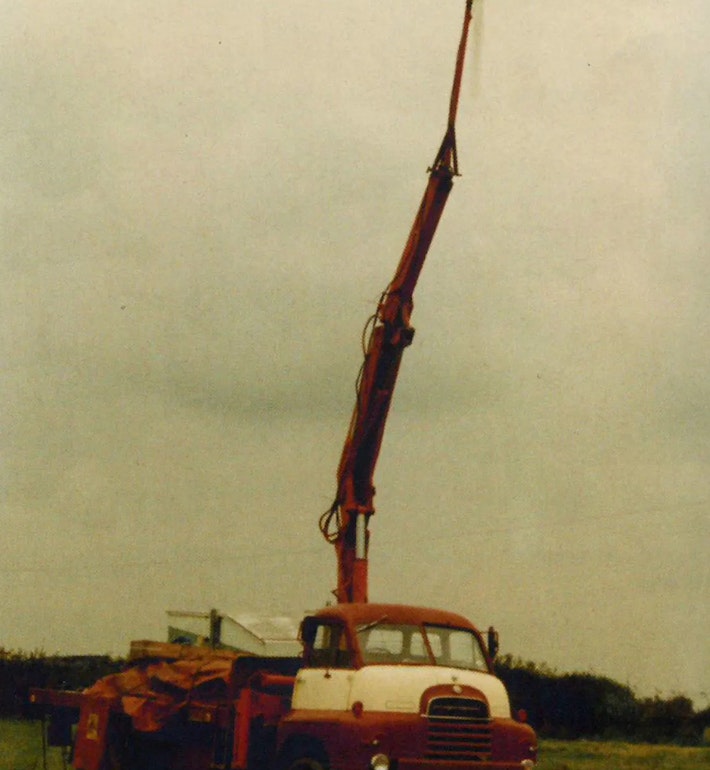
The Big Idea: Green Electricity for Everyone
By 1991, I was parked up on a hill near Stroud, powering my life with a small windmill, thinking about the climate crisis. Back then, it wasn’t front-page news, but the science was clear - the way we made electricity in Britain was one of the biggest causes of emissions.
I had a choice: carry on living a low-impact life myself, or try to build something bigger. As I looked down at the lights of Stroud below me, I knew I had to try.
Building a windmill wasn’t the problem - getting a fair price for the electricity was. The big energy companies weren’t interested. One even laughed me out of the room - Who on earth would want renewable energy?" they said. That was enough motivation for me.
If I couldn’t sell my power to them, I’d start my own company, and so Ecotricity was born.
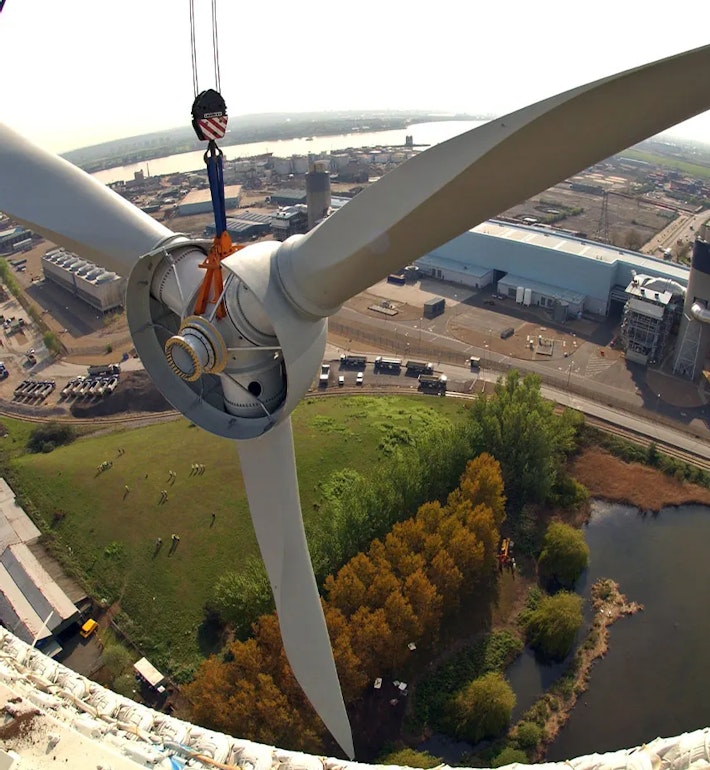
The Birth of Ecotricity
In 1995, I pioneered something called Embedded Supply - a way to link local wind power to local customers using the existing grid. It had never been done before. And with that, Ecotricity was born.
On April 1st, 1996, we delivered our first unit of green electricity, using landfill gas. Later that year, in December 1996, my first windmill started turning in a field near Stroud. It’s still there, still generating power.
By the late 90s, we were signing up major customers - Thames Water, The Millennium Dome, The Body Shop - all with a team of just 15 people.
Then came Merchant Wind Power, where we built turbines directly for businesses, so they could generate their own power. The first to sign up? Sainsbury’s, followed by Ford, where we’ve powered diesel car production for nearly 20 years.
By 2003, we started supplying homes for the first time, turning bills into mills - using customers' money to build more wind power.
In 2010, we launched green gas, making us the UK’s first true green energy company. By 2013, we had 100% green electricity for all customers. By 2014, we were supplying over 150,000 homes and delivering the best customer service in the industry.
We weren’t just proving that green energy worked - we were proving that people wanted it.
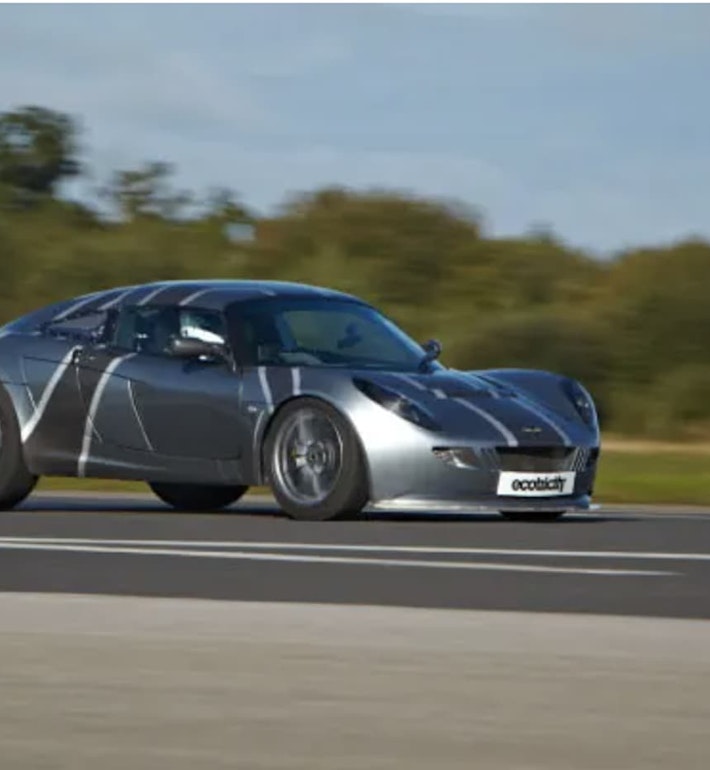
Beyond Energy: Food, Transport, and Sport
Solving the climate crisis isn’t just about energy - it’s also about how we eat and how we travel. That’s why I’ve spent the last 20 years working on solutions beyond just electricity and gas.
Forest Green Rovers – The world’s first carbon-neutral football club. We took meat off the menu, went fully vegan, and switched to green energy. Now we’re recognised by FIFA and the UN as the world’s greenest football club
Ecotalk – A mobile network that buys land for nature instead of paying dividends to shareholders
The Devil's Kitchen – A vegan food range for UK schools, because feeding kids sustainably should be the norm, not the exception
Ecobonds – A way for people to invest directly in green energy projects
The Nemesis – Britain’s first electric supercar, powered by the wind
The Electric Highway – The UK’s first motorway charging network, built years before anyone else cared about EVs
Sky Diamonds – Real diamonds made from carbon in the air - an ethical alternative to mining
The Ministry of Eco Education - working with teachers and schools to pilot a new green curriculum that puts sustainability at the heart of education
Ecojet - a world first and vital last step in the electrification of transport — enabling carbon-free living without compromise
Each of these projects has one thing in common: they prove we can do things differently - that we don’t have to trash the planet to have a good life.
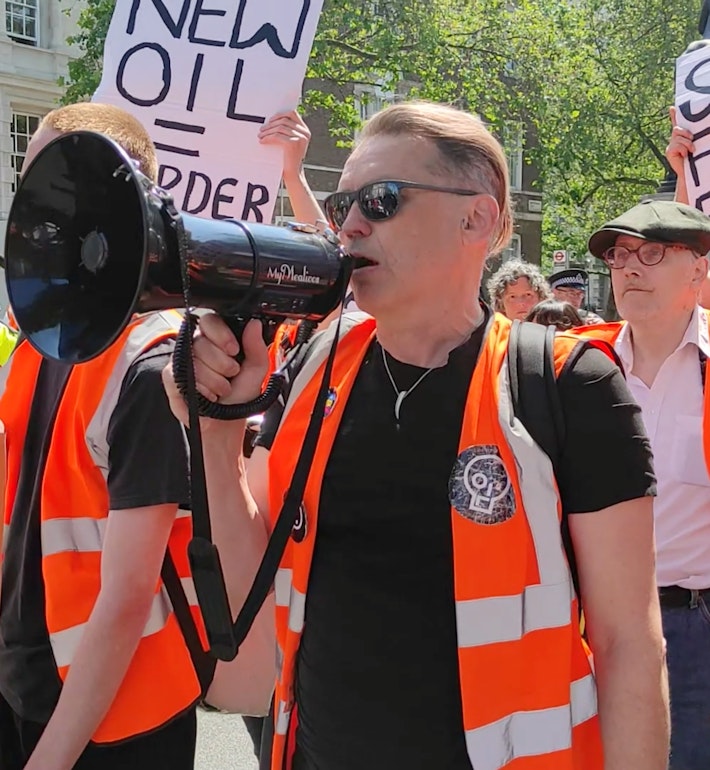
Speaking Out & Taking Action
In recent years, the climate crisis has finally started topping the political agenda - thanks in part to Extinction Rebellion, Greta Thunberg, Just Stop Oil and the sheer weight of evidence. But governments are still moving too slowly, and big business still puts profit before the planet.
I’ve never been one to sit back and watch, which is why I speak out - on TV, radio, social media, and in Parliament - wherever I can.
In 2004, I was awarded an OBE for services to the environment. In 2007, we won the Ashden Award for our work in renewable energy. And in 2019, I became a United Nations Climate Champion.
I’ve worked with the Express newspaper, trying to get climate action on the agenda for people who don’t typically hear about it. I also run Zerocarbonista, a podcast where I talk about climate news and what we can all do to fix this mess.

Manifesto: My Book on How We Fix the Climate Crisis
In 2023, I released my first book, Manifesto - part memoir, part blueprint for a zero-carbon Britain. It lays out a simple plan: fix energy, fix transport, fix food - and we fix the climate crisis.
It’s not some distant dream - it’s doable now. We just need the political will.
What’s Next?
More of the same - pushing for action, proving what’s possible, and calling out the bullshit.
The climate crisis isn’t waiting. Neither am I.
History
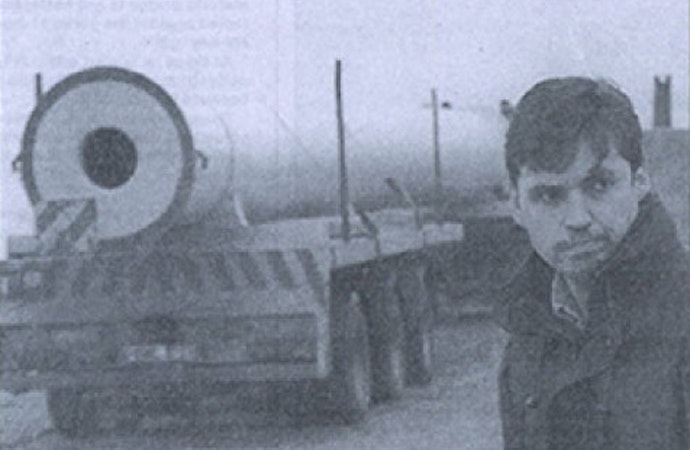
How Ecotricity Began – Cutting Out the Middleman
Five years after setting out on this journey, I was on the verge of building my first windmill. But there was a problem—getting a fair price for the electricity.
So, I went to see MEB, the local energy monopoly at the time. They laughed at the idea of green electricity—offering me a price that made it impossible to build more windmills. That was the moment I realised: if I wanted to make this work, I’d have to cut out the middleman.
The energy market was just being liberalised, and for the first time, it was possible to start an energy company from scratch. So that’s exactly what I did.
We spent 1995 studying the market, designing a way to connect local customers to local generation—something that had never been done before. We called it 'embedded supply’—using the local grid as it should be used, to match demand with generation in the same area. Sounds obvious now, but back then? It was completely new.
And with that, Ecotricity was born—to sell green electricity direct to customers and build the windmills Britain desperately needed.
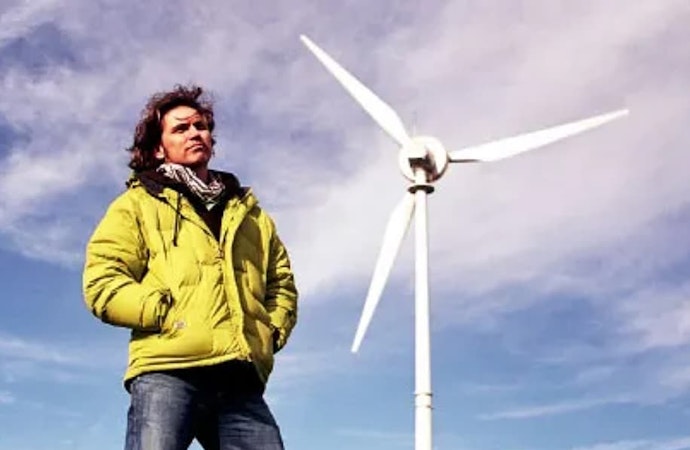
The Day It All Began – Our First Windmill
On 13 December 1996, something pretty special happened—we built our first ever windmill. It was the moment Ecotricity went from an idea to reality.
We’d spent the year getting everything in place—sorting planning, building the turbine, and launching as Britain’s first green electricity company. And on that cold December day, our first windmill started turning—in a field near Stroud. It’s been generating power ever since.
That was just the start. From one windmill, we built more. From one customer, we built the UK’s first green energy movement. And from that first magic moment in 1996, we’ve never looked back.
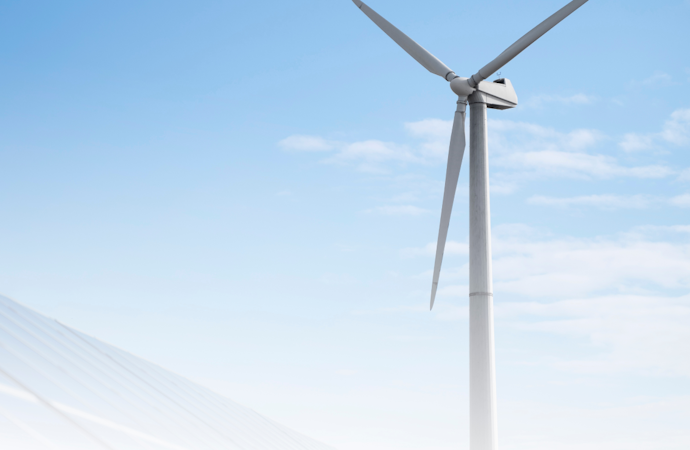
Wind Power, Climate Action & the Future of EVs
In December 1997, I jumped on a plane to Kyoto with a couple of mates to take part in the United Nations Climate Change Convention. The goal? To lobby anyone who’d listen about wind energy—and the crucial role it had to play in tackling the climate crisis.
The result of that historic convention was the Kyoto Protocol—the first legally binding agreement for industrialised nations to cut greenhouse gas emissions. A huge moment in the fight against climate change.
While I was there, I also went to one of the world’s first electric vehicle shows. Toyota was showcasing its electric RAV4, and I tried—unsuccessfully—to buy one. They weren’t ready to sell EVs to the public yet.
Fast forward 13 years, and we’d built our own: The Nemesis—a wind-powered electric supercar that smashed the UK land speed record. The wheel had turned full circle.
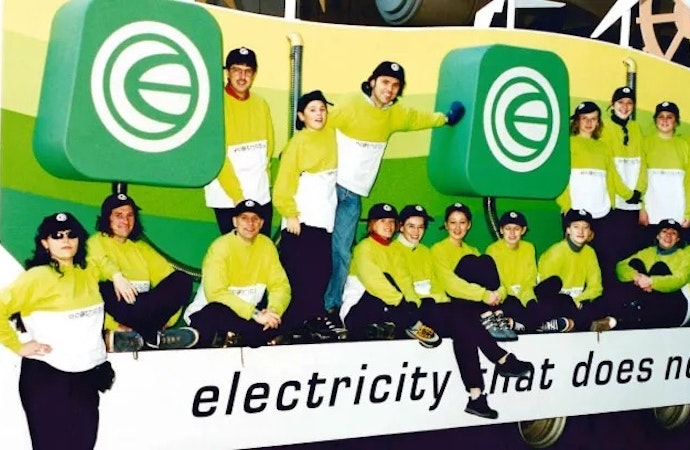
A Groundbreaking Partnership with Thames Water
In 1998, we teamed up with Thames Water in a game-changing joint venture to produce and supply renewable electricity. It was a colossal step—both for Ecotricity and for the whole idea of green electricity.
The then Energy Minister, John Battle, joined us in London to launch the partnership—a clear sign that renewable energy was starting to be taken seriously. And this was no small deal—it quadrupled our turnover to £50 million a year, practically overnight.
Sadly, it wasn’t to last. The deal fell through two years later, followed by three years in the courts. A tough lesson in how big companies really operate—but that’s a story for another day…
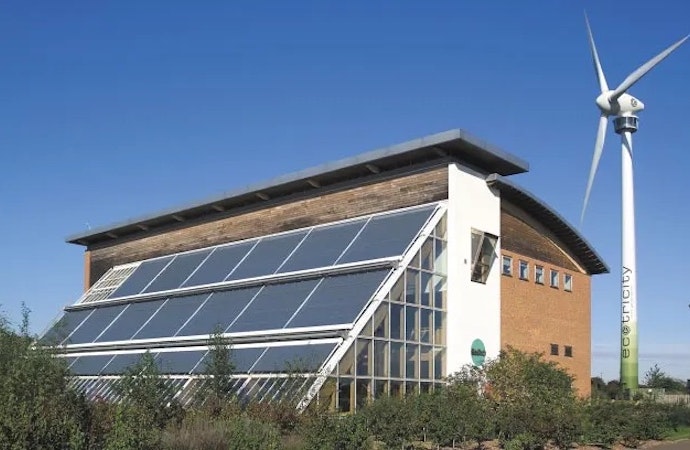
The UK’s First Multi-Megawatt Windmill & The Ecotech Centre
1998 was the year the Ecotech Centre opened in Norfolk—later known as The Green Britain Centre. A visitor centre dedicated to educating people about the environmental crises we face—and, more importantly, how we can fix them.
Our contribution? The UK’s first ever multi-megawatt windmill, right in the back garden.
At 70 metres tall, it was twice the height of conventional windmills at the time and generated three times the power. A proper leap forward for wind energy.
And we didn’t stop there. We asked Sir Norman Foster to design a viewing platform—and then we opened the windmill to the public, letting people climb up inside it and see wind power in action, up close.
For years, it stood as a monument to what renewable energy could do—and a reminder that the future of energy wasn’t fossil fuels. It was wind.
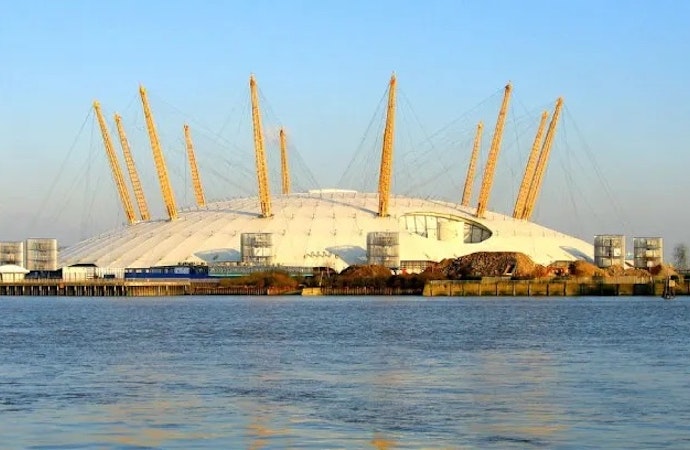
Powering the Millennium Dome & Bringing Green Energy to the High Street
The turn of the century brought another big moment—Ecotricity was chosen as the sole energy supplier to the Millennium Dome.
Under our joint venture with Thames Water, we powered the Dome with green electricity generated from London’s sewerage sites. The running joke at the time? Flush the loo at the Dome, and the lights got brighter.
It was another sign that green energy was starting to go mainstream. And later that year, we got another boost—Anita Roddick, founder of The Body Shop, switched all her stores to Ecotricity.
But she didn’t stop there—she challenged other high street retailers to do the same, calling them out in the press.
At the time, we were still a tiny company with just 15 employees—so landing the Millennium Dome and The Body Shop in the same year? A pretty big deal.
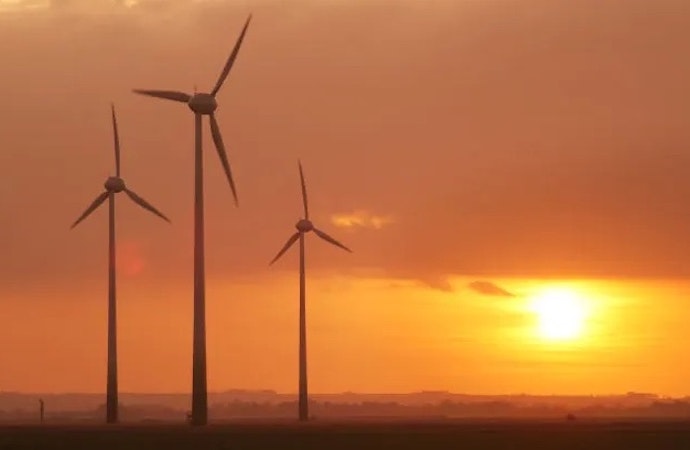
Lincolnshire’s First Windmills & A Big Move with The Body Shop
In July 2002, we built two more windmills, this time near Mablethorpe, Lincolnshire—the first in the county. Together, they generated enough electricity to power 1,000 homes—nearly half of Mablethorpe’s households.
These were the first windmills built under the government’s Renewables Obligation, introduced earlier that year—or at least, that’s what we thought. OFGEM later had other ideas and mugged us, but that’s another story...
Meanwhile, our bills into mills model—using business customers’ bills to fund new windmills—was working well. In August 2002, we teamed up with The Body Shop again, getting ready to take Ecotricity to the people and make our next big move...
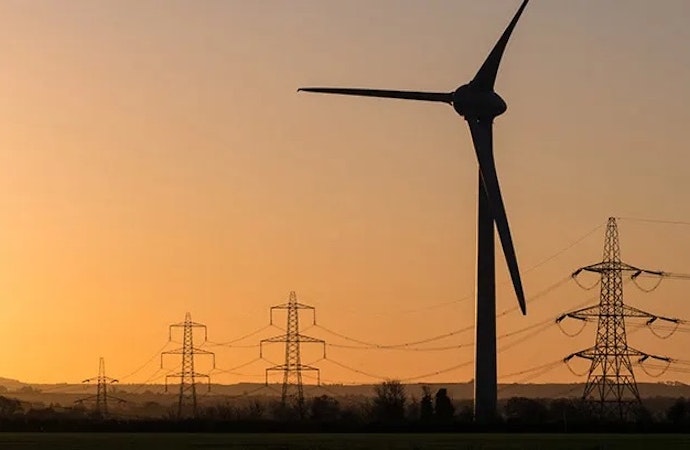
Bringing Green Energy to British Homes
Up until 2003, we’d only ever supplied businesses with green electricity. But that year, we finally made the big move into homes—something we’d wanted to do for a long time. Because if we were going to build a Green Energy Revolution, everyone needed the chance to take part.
By the end of our first year, over 3,000 homes had switched to Ecotricity—a brilliant start.
Meanwhile, we built our second windmill in Swaffham—but this one was special. It wasn’t just our idea. Local people actually asked us to build it. They loved the first windmill so much, they wanted another.
That’s what sustainable development looks like—windmills that are such good neighbours, people want more of them.
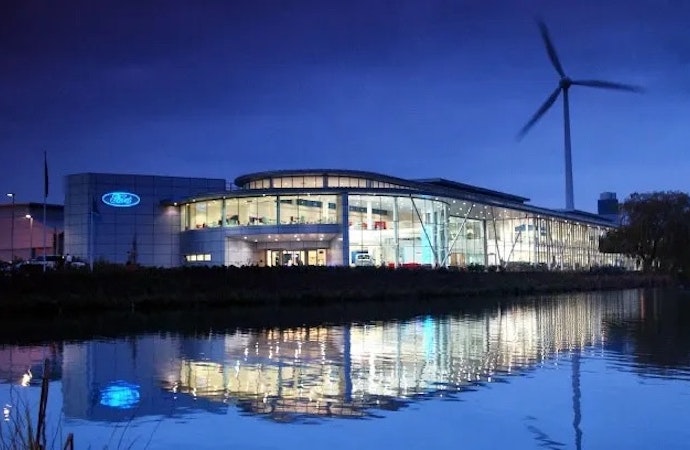
An OBE, More Windmills & Powering Ford with Green Energy
The year kicked off with something pretty special—I was awarded an OBE for services to the environment in the New Year Honours list. A nice moment, but the real work was just getting started.
2004 was our most productive year yet for building windmills. We added eight new turbines to our existing two in Lincolnshire, generating enough electricity to power 4,000 homes.
We also completed our second Merchant Wind Power project—two big windmills at Ford’s Dagenham plant. This was a landmark moment—Britain’s first industrial wind power project. And it wasn’t just for show—these windmills powered Ford’s new diesel engine factory.
Since 2004, every Ford diesel car and van in Britain has been made in a factory running on 100% green electricity—a serious endorsement of wind power and proof that our Merchant Wind concept worked.
And to top it all off? By the end of the year, we were supplying nearly 8,000 homes with green electricity.
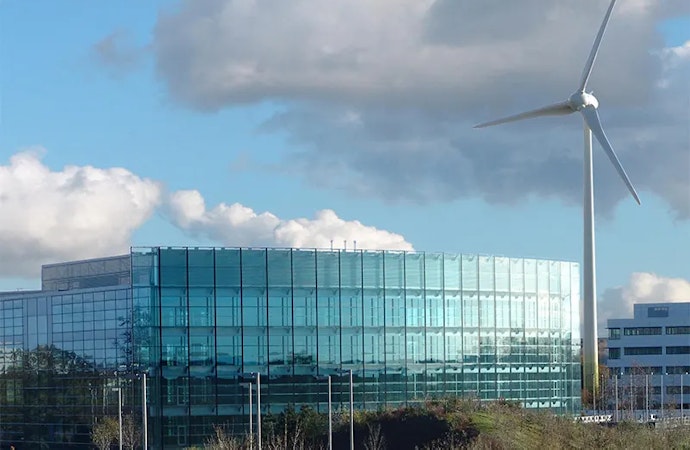
A Decade of Ecotricity & Britain’s Most Visible Windmill
We marked 10 years of Ecotricity in style—by building Britain’s most visible windmill at Green Park, Reading, right next to the M4 motorway.
At the time, we reckoned nine out of ten people had never seen a wind turbine before. With anti-wind propaganda ramping up, misinformation was everywhere. So, we decided to cut through the noise the best way possible—by putting a windmill where millions could see it for themselves.
It went down a storm. With a giant advert for clean energy spinning in their back yard, Reading Council even started talking to Greenpeace about how the borough could go 100% wind powered.
This was our third Merchant Wind Power project, but the first to power offices rather than a factory—and, surprisingly, the first windmill in the entire South East region.
Meanwhile, our customer numbers kept climbing—by the end of 2006, over 13,000 homes were powered by Ecotricity. Not bad for a 10-year anniversary.
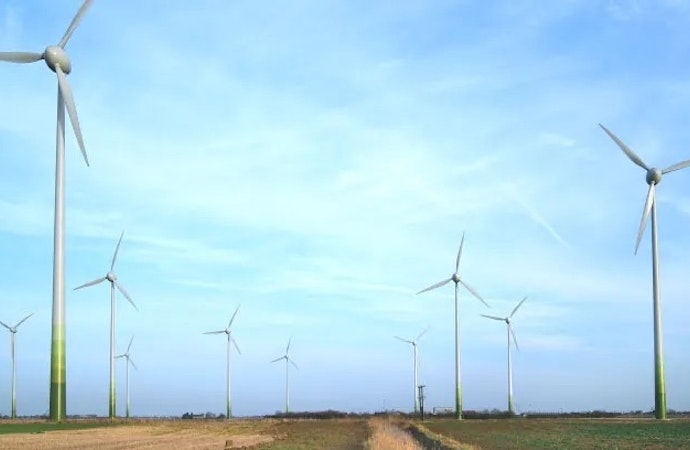
More Customers, More Windmills & More Big Names Going Green
2006 was a huge year for Ecotricity - on both fronts that matter most.
First, our customer numbers exploded, growing by 10,000 in a single year - a 77% increase. By the end of 2006, we were powering over 23,000 homes with green electricity.
Second, we built eight more windmills. Six were added to our Bambers wind park in Lincolnshire, bringing the total to 16 turbines. And we expanded our Merchant Wind Power scheme, adding two more windmills at Michelin’s tyre factory in Dundee.
That meant that by the end of 2006, Ford’s diesel engines, Michelin tyres, Sainsbury’s cold storage, and Prudential’s offices in Reading were all being powered by the wind.
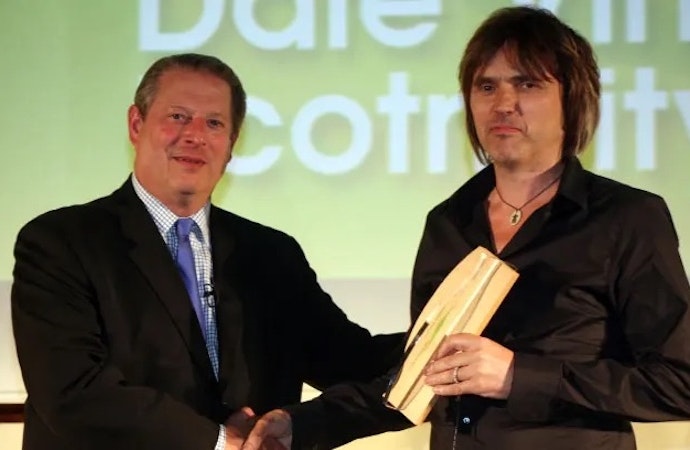
An Award from Al Gore & Wind Power for Bristol Port
2007 was another big year—this time with some recognition to go with it.
Al Gore presented me with the Ashden UK Award for our work in renewable energy, specifically for our pioneering Merchant Wind Power initiative—bringing wind energy to big industrial users.
So, it was fitting that this was also the year we built three new windmills in the Bristol area, supplying green electricity to the Bristol Port Company at Avonmouth Docks. These stunning turbines have become a landmark on the Severn Estuary skyline, providing up to half of the port’s power.
Industry meets the environment—nothing sums that up better than windmills powering one of Britain’s biggest ports.
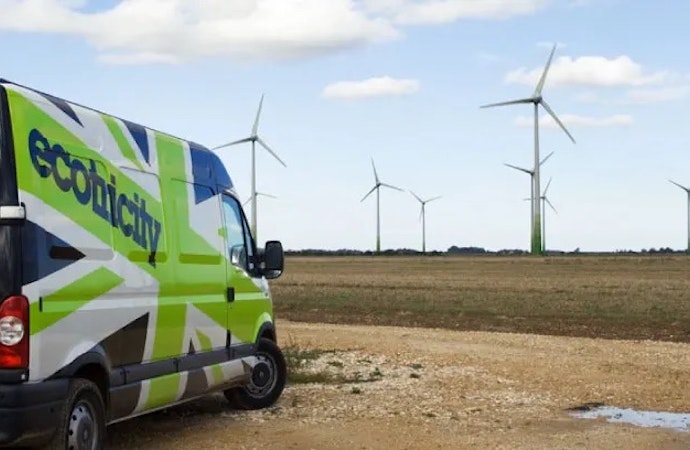
More Windmills, Record Investment & Pushing the Limits of Green Tech
What a year—crazy energy prices and the start of a global recession.
Luckily, we’d spent years lining things up—and in 2008, it all came good. We built 21 new windmills, almost doubling our wind park programme and setting a new record for investment in green energy. More windmills meant more green electricity in our mix, proving that even in tough times, the renewable revolution wasn’t slowing down.
At the same time, we pushed forward on two groundbreaking R&D projects. We started work on Greenbird, our attempt to break the land speed record for a wind-powered vehicle, and we began designing The Nemesis—our electric supercar.
2008 wasn’t just about scaling up wind power—it was about proving that clean energy could do things fossil fuels never could.
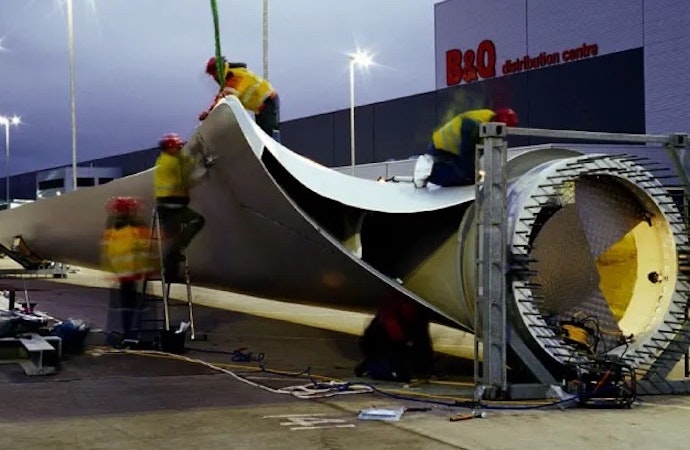
A Tough Year, But No Slowing Down
The global recession rolled on, making an already tough job even tougher. The pound crashed against the Euro—bad news when you’re buying windmills in Euros. Banks stopped lending, and progress in the energy sector ground to a halt.
But at Ecotricity, we pressed on. In 2009, we built four more windmills, adding to Britain’s green energy infrastructure. We also welcomed B&Q to the revolution, building a windmill to power their distribution centre in Worksop, Nottinghamshire.
Meanwhile, we kept pushing ahead with planning applications for even more windmills. And despite the economic downturn, people kept switching—by the end of the year, we were powering nearly 35,000 homes.
Proof that people don’t just care about the environment when times are good. The Green Energy Revolution was here to stay.
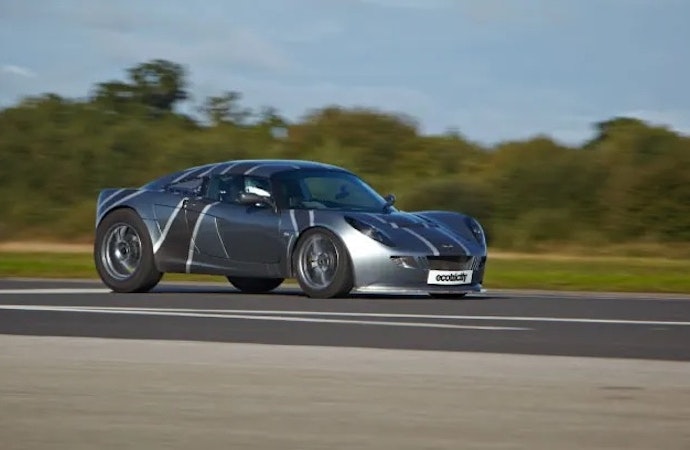
Green Gas, Ecobonds & A Record-Breaking Supercar
In 2010, we kept pushing boundaries—bringing big, revolutionary ideas to the energy market.
First, we launched our Green Gas tariff, making Ecotricity the first energy company to offer a truly green dual fuel option. Until then, green electricity was possible—but green gas? That was a first.
We also stepped into green finance, launching Ecobonds—a new way for people to invest in renewable energy projects and share the benefits.
Over in transport, we unveiled The Nemesis—our wind-powered electric supercar, which went on to break the British land speed record for EVs.
And to top it off, we started work on our first ever sun park—proving that it wasn’t just about wind power anymore.
By the end of the year, our customer base had grown to nearly 45,000. Not bad at all.
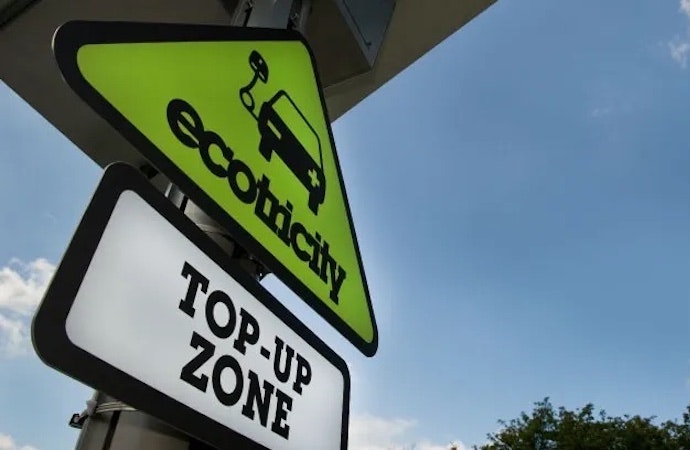
60,000 Customers & The Birth of the Electric Highway
July 2011 saw a big milestone—our 50,000th customer switched to Ecotricity. By the end of the year, that number had hit 60,000. More proof that the Green Energy Revolution was gathering pace.
But the biggest moment of the year? Launching the Electric Highway—the UK’s first motorway charging network for electric cars. We partnered with Welcome Break service stations to tackle range anxiety and make it easier for EV drivers to charge with green electricity.
By December, Phase One was complete, allowing people to drive from London to Exeter, Bristol, Birmingham, Manchester, Liverpool, and even up to the Lake District—without worrying about running out of power.
Meanwhile, we kept expanding our green energy projects. We launched Britain’s first proper sun park, built a couple more windmills, and followed up on our Ecobonds programme with a second round of fundraising—getting ready for some big green energy projects in 2012.
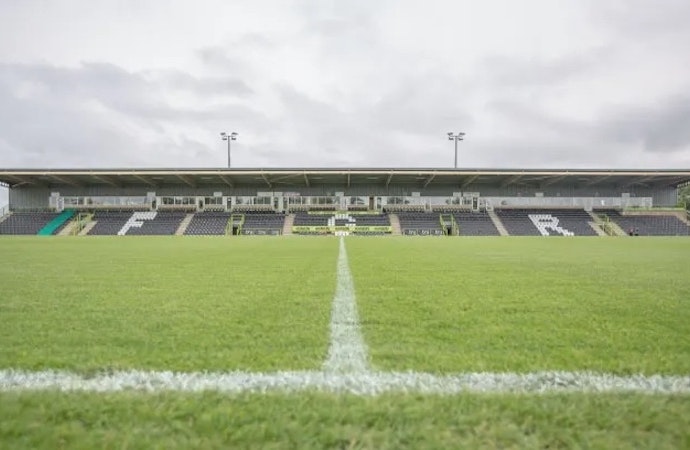
Viral Campaigns, a Land Speed Record & More Green Energy
2012 was a year of big moments—and plenty of media attention.
In February, our Dump the Big Six video went viral. With animated cooling towers collapsing in protest, it hit 2.6 million views on YouTube—helping spread the message that Britain needed to ditch the energy monopolies and go green.
In June, we teamed up with Friends of the Earth for a Clean British Energy campaign. We hit commuter hubs across the country, putting CBE medals around the necks of iconic Brits—a stunt designed to get people thinking about switching to homegrown, green electricity.
In September, we smashed another record—The Nemesis broke the British land speed record for an electric vehicle, hitting 151mph and shattering the myth that EVs were slow and boring.
We also kept growing our green energy projects, building more windmills, relaunching our online shop, Ecotopia, and making history with Forest Green Rovers—which became the first football club in Europe to achieve EMAS status, the EU’s gold standard for environmental management.
A year of big wins, bold campaigns, and record-breaking green energy progress.
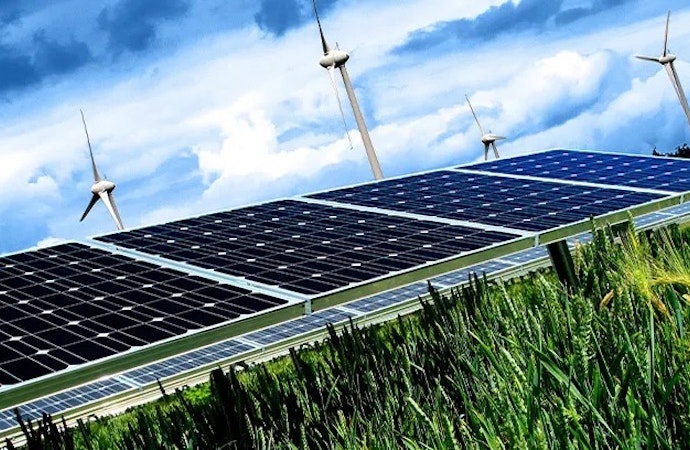
100% Green Electricity, a Frack-Free Future & Our First Year at WOMAD
1 August 2013 was a big moment - we switched all of Ecotricity's customers to 100% green electricity.
Until then, we’d had two tariffs - New Energy (60% green) and New Energy Plus (100% green for a small extra cost). But we decided everyone should have fully green electricity - without paying extra. So we created the Green Electricity tariff, which blended the best of both worlds: 100% green power at the lower price of the New Energy tariff.
At the same time, we made a bold commitment on gas - introducing our frack-free promise. We’d already launched Britain’s first Green Gas tariff, but now we assured customers that we would never use fracked gas and would actively support anti-fracking groups across Britain. Because what’s the point of squeezing oil from shale when clean energy is cheaper to produce?
2013 was also our first year at WOMAD Festival - and we loved it so much, we’ve been supporting it every year since, including WOMAD at Home in 2020.
100% green energy, no fracking, and more people than ever making the switch - 2013 was a year of real progress.
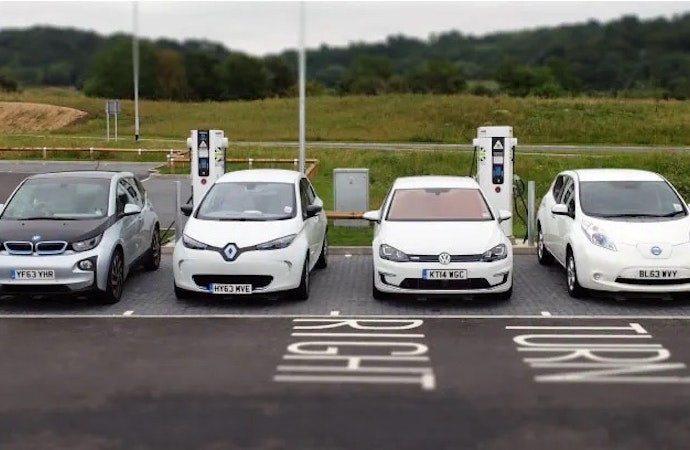
Doubling in Size, More Wind Power & 5 Million Miles of Emissions-Free Driving
2014 was one of the biggest years in Ecotricity history. By the end of the year, we’d doubled in size, powering over 150,000 customers with green energy.
We also continued to provide the best customer service in the industry, topping the Which? Best Energy Company survey and receiving the fewest complaints of any energy company - for the fifth year running.
On the wind power front, we added four new windmills at Galsworthy, Devon - our 19th wind park - generating enough electricity to power over 4,000 homes a year.
Meanwhile, the Electric Highway was transforming Britain’s roads. In 2014 alone, it powered almost 5 million miles of emissions-free driving - proving that the future of transport was electric, and it was happening now.
More customers, more windmills, and more clean miles on the road - 2014 was a year of serious progress.
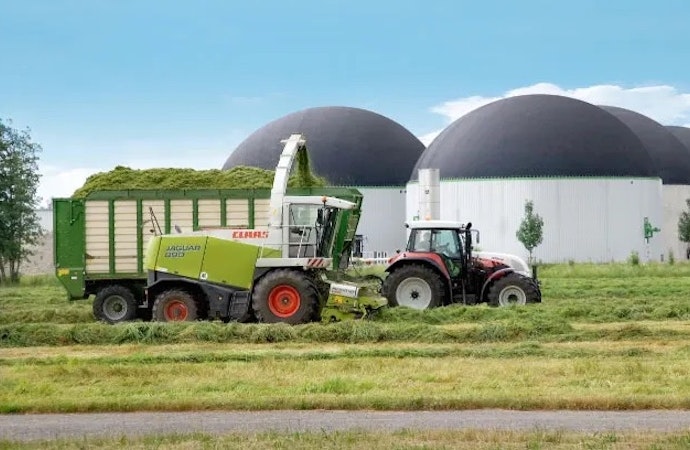
Green Gas, More Windmills & £18.5 Million for New Energy Projects
2015 was the year we unveiled our radical plans for green gasmills—producing renewable gas from grass.
This was a huge discovery for us, one that could transform the way Britain is powered. We knew then, as we do now, that green gas will be a major part of a fossil-free future.
We also continued leading the way on customer service—topping the Which? Best Energy Company survey for the second year running and receiving the fewest complaints in the industry for the sixth year in a row.
On the energy front, we broke ground on our latest wind park at Dalby, Leicestershire, installing the first of nine windmills.
And to fund even more green energy projects, we launched our third Ecobond—following the success of our previous two. This time, we raised £18.5 million—money from people who wanted to invest in a greener Britain.
2015 was all about building the future—more wind, more innovation, and more people joining the revolution.
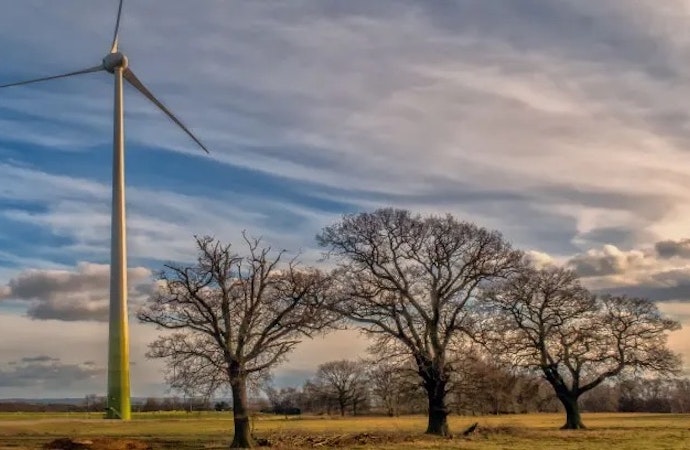
More Wind Power, £16 Million for Green Energy & The World’s Best Green Energy Brand
2016 saw more windmills, more investment in renewables, and global recognition for Ecotricity.
Our Dalby wind park in Leicestershire was completed, generating 20 million units of electricity—enough to power over 5,000 homes a year.
We also added new windmills under our Merchant Wind Power scheme at:
The RSPB’s Lodge HQ in Sandy
H+H Pollington in Yorkshire
Queen Elizabeth Hospital in King’s Lynn
Together, these turbines produce enough green energy for around 1,200 homes annually—helping businesses and organisations take control of their energy and go green.
We returned to WOMAD for the fourth year, running our Big Green Chat and Young Green Briton Chat—bringing climate discussions to the festival crowd.
We also launched Ecobond 4, raising another £16 million to fund more green energy projects across Britain.
And to top it all off, at the first-ever global Energy Branding conference, Ecotricity was named the World’s Best Green Energy Brand—proving that our vision for a greener Britain was making an impact worldwide.
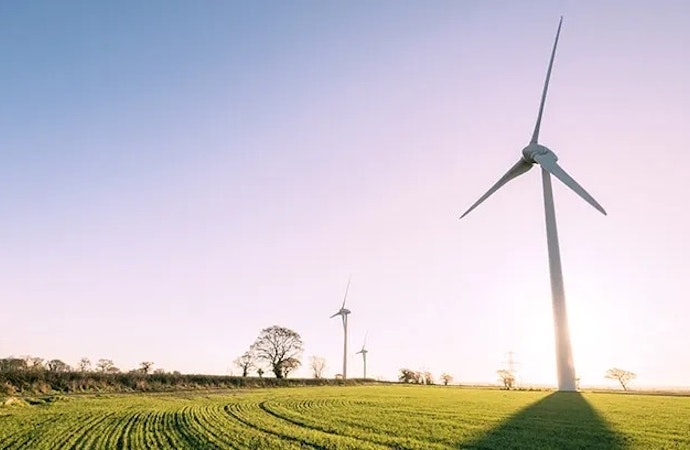
Vivienne Westwood, Saving the Bees & A New Home in Bristol
2017 kicked off in style - literally. Legendary designer and climate campaigner Vivienne Westwood switched her business energy to Ecotricity and even named her London Fashion Week show ‘Ecotricity’.
Meanwhile, Britain’s bees got a helping hand as we launched the Pollinator Promise, calling on people to create bee-friendly spaces in their gardens. Nearly 2,000 people signed up, transforming spaces from Inverness to Penzance - because a green Britain needs more than just clean energy.
We also opened a new office in Bristol, bringing in some of the city’s top digital talent to help transform our customer experience - keeping us ahead of the game as we grew.
Fashion, bees, and a bigger, better Ecotricity - 2017 was off to a flying start.
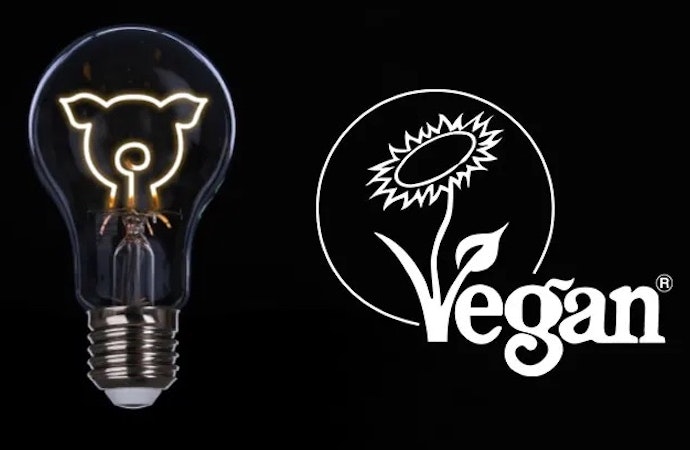
Ecotalk, Vegan Energy & Taking the Green Message Global
2018 started with a big move into mobile. We launched Ecotalk, our green mobile phone service—because the mobile industry has a huge environmental impact that barely gets talked about. With Ecotalk, we put customers' bills to work giving land back to nature, creating vital new habitats for British wildlife—a mobile network with a real green outcome.
In New York, I picked up the Climate Neutral Now Prize from the United Nations, recognising Forest Green Rovers as the world’s first carbon-neutral football club. I spoke about how we’d made FGR the greenest football club in the world, and how others could follow our lead.
We also hit the road, visiting more events than ever, including WOMAD, Larmer Tree, the Festival of Nature, and Notting Hill Carnival, spreading the green energy message far and wide.
And we kept pushing boundaries—Ecotricity became the first energy company to offer certified vegan electricity, proving that not all energy is created equal.
Finally, we unveiled a smart grid project—helping businesses save energy and money, and leading the way to the future of energy in Britain.
A year of firsts, big ideas, and spreading the revolution.
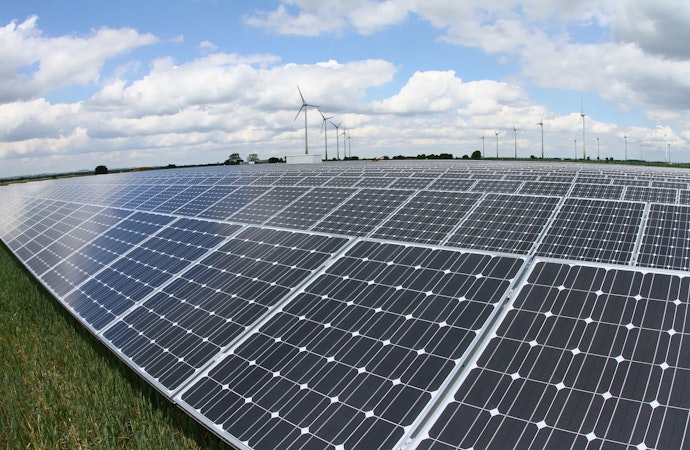
A Climate Emergency, More Green Energy & A Smarter Grid
2019 was the year the climate crisis finally hit the political agenda. Thanks to Extinction Rebellion and Greta Thunberg, the world started paying attention to something we’ve been shouting about for decades.
Ecotricity became the first—and only—energy company in the UK to declare a climate emergency and backed XR’s 2025 target for carbon neutrality. Because if we don’t take drastic action now, the damage will be irreversible.
That’s why we kept doing what we do best—turning bills into mills. Work began on three new sun parks in Devon, Lincolnshire, and Somerset—which, once completed, would generate enough green electricity to power 3,000 more homes.
We also kept pushing forward on Britain’s first green gasmill—bringing us one step closer to a fossil-free future—and developed a smart grid and battery storage system, giving homes and businesses the ability to play an active role in Britain’s renewable energy future.
The more people who join the revolution, the more we can do to fight the climate emergency—and in 2019, we took some big steps forward.
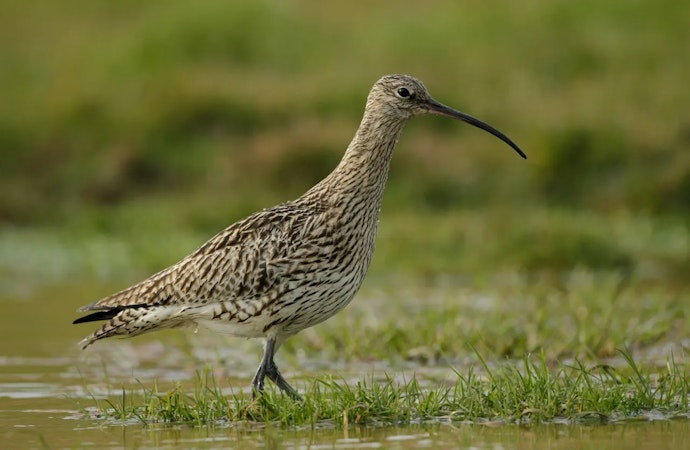
A Year of Crisis & Taking Action
As Covid swept the world in early 2020, we did what we could to help where it mattered most—supporting our team, our communities, and those on the front line.
At Devil’s Kitchen, we stepped up to feed key workers—supplying 75,000 spicy vegan balls to NHS staff at the new Nightingale Hospital in London. They went down a storm, and every penny in proceeds went straight back into the NHS.
Closer to home, we opened the Forest Green Rovers Players’ Hostel to NHS staff—giving frontline workers a place to stay so they could keep working while keeping their families safe. We also donated thousands of pounds worth of food and drink to food banks across Gloucestershire, helping those who needed it most.
Later in the year, we took Ecotalk to the next level—joining forces with the RSPB to create Ecotalk + RSPB. Now, 100% of our profits go into buying land for nature, creating more homes for wildlife across Britain. Every call, text, and selfie now powers nature—not just a phone network.
2020 was tough—but it was also a year for taking action and proving that business can be a force for good.
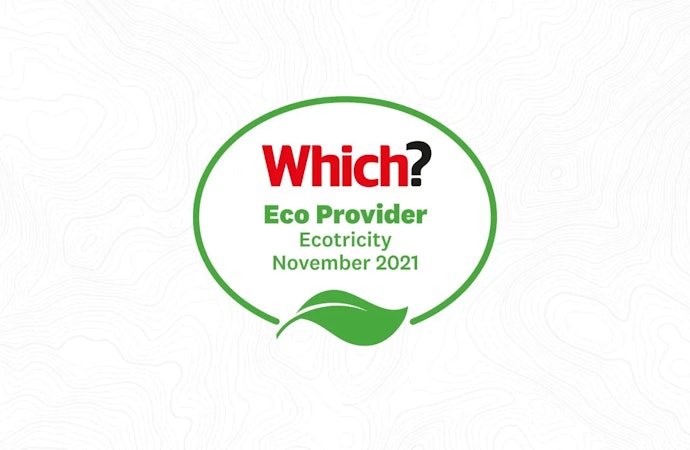
An Eco Provider Award, Selling the Electric Highway & Breaking New Ground
2021 was a year of recognition, progress, and pushing the boundaries of green energy.
Which? named Ecotricity as one of just three energy companies worthy of their Eco Provider award—placing real value on how much green power suppliers actually generate themselves or buy directly from renewable sources.
This is the only kind of action that truly moves the needle in the fight against climate change—what we call turning bills into mills. And Which? recognised it, saying that Ecotricity “puts customers’ money towards building new renewable generation”—exactly what we’ve been doing for over 25 years.
We also sold the Electric Highway—the world’s first national charging network for electric cars, which we launched back in 2011. It played a pivotal role in kickstarting Britain’s EV revolution, making long-distance electric travel possible for the first time.
The time was right to pass the baton to Gridserve, who shared our vision and had the resources to invest further in this vital infrastructure for a zero-carbon Britain.
That sale gave us the means to push new boundaries in our green energy business—accelerating work on Britain’s first Green Gasmill and developing two large-scale solar parks.
And we didn’t stop there—we signed an agreement to help bring geothermal energy to Britain for the first time. By harnessing steam from more than three miles beneath Cornwall, this site will generate at least 3 megawatts of renewable electricity—enough to power 10,000 homes a year, feeding into the National Grid.
Recognition, reinvestment, and breaking new ground—2021 was about looking forward and making the future greener than ever.
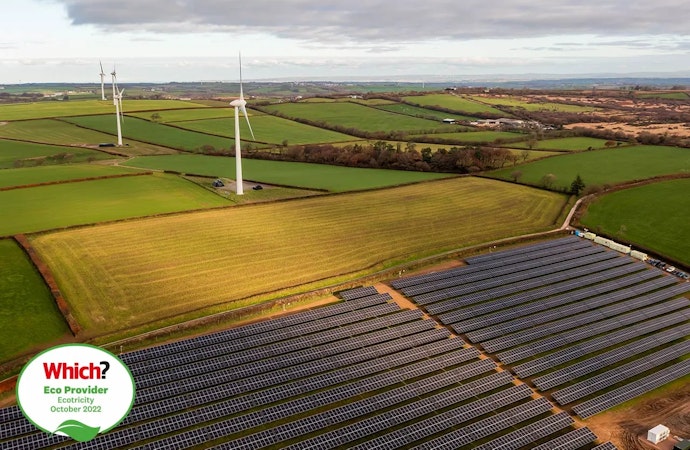
Breaking Ground on Green Gas & Building More Solar Power
Ecotricity began construction on Britain’s first Green Gasmill, pioneering a way to produce ‘natural gas’ for the grid—simply from grass. A revolutionary step in proving that we don’t need fossil gas to power Britain—we can grow our own.
We also expanded our solar power portfolio, building two new sun parks at Bulkworthy (near Galsworthy Farm) in Devon and Dalby, Leicestershire. Both sites sit next to our existing wind parks, creating hybrid renewable energy hubs. And they use bifacial solar panels—a game-changing technology that generates power from both sides by capturing sunlight reflected off the ground.
Meanwhile, we pushed ahead with plans for Heckington Fen sun park in Lincolnshire—set to be one of Britain’s largest, capable of generating enough electricity to power 100,000 homes.
And for the second year running, we were recognised by Which? as an ‘Eco Provider’—a nod to the fact that we don’t just talk about green energy—we build it.
2022 was all about breaking new ground—literally and figuratively—on Britain’s path to a fossil-free future.
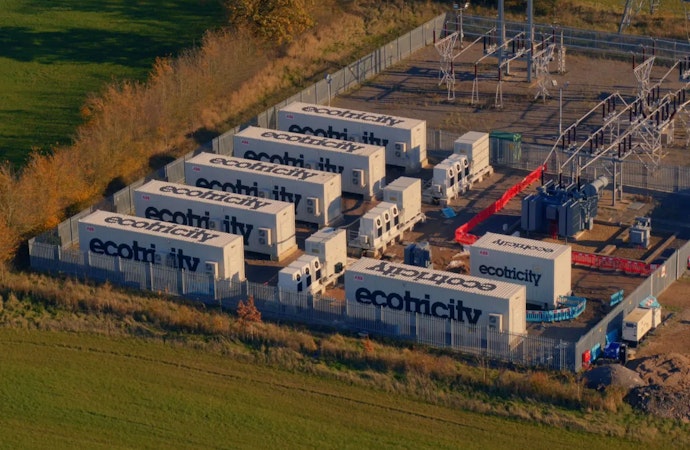
Green Gas, Battery Storage & an Electric Airline
2023 was a year of big firsts—real progress in the fight for a fossil-free future.
We completed our first Green Gasmill in Reading, Berkshire—and it will pump green gas, made from grass, straight into the local grid. A massive moment in proving that we don’t need fossil gas to heat our homes - we can grow our own.
We also made huge strides in energy storage with our first grid-scale battery project in Alveston. The Ecotricity-branded containers arrived on site, the batteries were installed, and we moved one step closer to a truly flexible, renewable-powered grid.
Meanwhile, I released a report on the untapped power of rooftop solar—showing how, if we covered Britain’s rooftops with solar panels, we could slash energy bills, cut fossil fuel dependence, and get closer to real energy independence.
And in a world first, we launched an electric airline, powered entirely by renewable energy. This aviation revolution is set to change how we see air travel—making it net-zero and emission-free for the first time.
We also welcomed some great new partners to the Ecotricity family, including BOSH!, allplants, and Made In Hackney—brands that share our vision for a greener Britain.
And to top it off, we moved up to third place in the Citizens Advice league table, which ranks all energy suppliers on customer service. Another fantastic achievement—and we know the only way is up from here.
Green gas, big batteries, clean air travel, and a push for solar—we’re making the future happen, one breakthrough at a time.
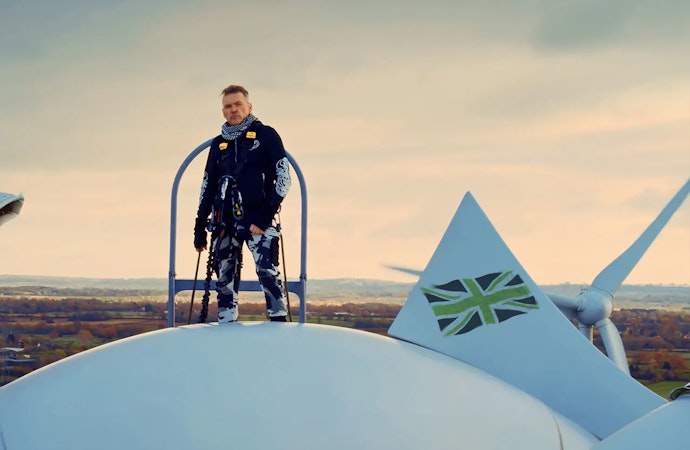
A TV Debut, More Awards & A Future-Proofed Grid
We kicked off 2024 with a big first—our very own TV ad, featuring real Ecotricity customers and me up a windmill at our Alveston wind park. Because if you’re going to talk about green energy, you might as well do it from the top of a turbine.
And the recognition kept coming. We were named a Which? Recommended Provider for energy companies in 2024, on top of being a Which? Eco Provider for the fourth year running. We also topped the Citizens Advice customer service rankings twice in a row—a huge achievement and proof that we put customers first, every time.
Meanwhile, we put the finishing touches on our battery storage site in Alveston, South Gloucestershire. It sets the standard for how we balance supply and demand in a renewable-powered Britain—storing green energy when it’s plentiful and releasing it when it’s needed.
We also teamed up with Ripple Energy—giving our customers the chance to part-own a wind park in the Scottish Borders. This isn’t just a green energy partnership—it’s a way for our customers to directly benefit from the shift to renewables, with lower bills and real carbon savings once the site goes live.
A national TV debut, industry-leading service, grid-scale battery storage, and a way for customers to own a piece of the green energy revolution—2024 is off to a flying start.